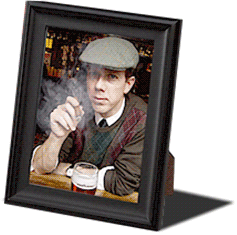|
|
|||||
|
22 October 2006 |
|||||
|
|
|||||
| Talisker Fireside Chat, Tuesday, October 24, Tower Club, 5:30pm | |||||
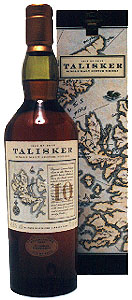 Martin
Duffy, Master of Scotch, will be joining us again at the Tower Club—this time to share several bottlings of Talisker scotch whisky and tell
stories about the distillery, on the Isle of Skye. Talisker House is the seat of the eldest son of the
MacLeod clan and takes its name from the Norse name for the mountain,
Thalas Gair, or Sloping Rock. The distillery is on the exposed west
coast of the island, on the seaweedy shores of Loch Harport.
Talisker scotch is known for its above-average peat flavor and high
phenol content. According to Wikipedia, "The malt used is peated
to a phenol level of approximately 25 parts per million, which is
rather high. Additionally, the water used for production, from Cnoc
nan Speireag, flows over peat, which adds additional peatiness to the
whisky." Talisker is the only distillery on
Skye but the island is also the home of a company making a vatted
malt called Poit Dhubh, and a blend, Te Bheag.
Both are said to contain some Talisker. (For more information, see Sabhal Mor Ostaig.) Talisker is also a component of Drambuie liqueur
and Johnnie Walker Green Label Scotch. ($10 includes scotch and light
hors d'oeuvres.) Martin
Duffy, Master of Scotch, will be joining us again at the Tower Club—this time to share several bottlings of Talisker scotch whisky and tell
stories about the distillery, on the Isle of Skye. Talisker House is the seat of the eldest son of the
MacLeod clan and takes its name from the Norse name for the mountain,
Thalas Gair, or Sloping Rock. The distillery is on the exposed west
coast of the island, on the seaweedy shores of Loch Harport.
Talisker scotch is known for its above-average peat flavor and high
phenol content. According to Wikipedia, "The malt used is peated
to a phenol level of approximately 25 parts per million, which is
rather high. Additionally, the water used for production, from Cnoc
nan Speireag, flows over peat, which adds additional peatiness to the
whisky." Talisker is the only distillery on
Skye but the island is also the home of a company making a vatted
malt called Poit Dhubh, and a blend, Te Bheag.
Both are said to contain some Talisker. (For more information, see Sabhal Mor Ostaig.) Talisker is also a component of Drambuie liqueur
and Johnnie Walker Green Label Scotch. ($10 includes scotch and light
hors d'oeuvres.)The king o' drinks, as I conceive it, Talisker, Islay or Glenlivit. —Robert Louis Stevenson |
|||||
|
|
|||||
| Fight Night, Thursday, November 2, University Club | |||||
|
The University Club Fight Nights, this year on November 2 and 3, are the preeminent cigar and boxing events of the city. Cocktails and hors d'oeuvres at 6:00, dinner at 7:00, Golden Gloves boxing at 8:30. Black tie. ($150. ) The Cigar Society has already filled its two tables of ten for November 2, but spaces at other tables are still available on both nights. For more information, write to Mr. Turner. |
|||||
|
|
|||||
| In our last meeting... | |||||
|
The fall Cigar Society Dinner was held
last Thursday, October 12th, Columbus Day. Chef Omar
Rocha prepared a terrific dinner, combining old- and new-world
ingredients, and spirits expert Gina Castillo led a tasting of four
premium tequilas. Mr. Benitez oversaw the excellent
service.
In attendance were David O'CONNOR, Ernie Freudman (QuotePro), Dick Danstrom (Home Team Inspection), Jack Bolling (Ceres Cafe), Mil Ovan (Firefly Energy), Michael Watkins (NSX), Marshall ABBEY, David FITZPATRICK, Tom O'BRIEN, Mark WARDEN, Douglas JOHNSON (Chicago Croquet Club), your loyal secretary, Victor TUTIVEN, George Thiruvathukal (Loyola University), Vadim Shayevich, Jon HALVORSON, Gina Castillo (Diageo), and Paul GALANIS and two of his guests. Your loyal secretary gave an introduction to the menu by way of the etymology and provenance of some of the menu items, and Gina Castillo talked about tequila. In the beginning was tobacco.
A brief look at our dinner menu, which was designed by Tower Club Chef Omar Rocha and spirits expert Gina Castillo, shows how harmoniously old and new world ingredients can be used together. Our appetizer, ceviche, is originally Peruvian, and exhibits a glorious commingling of chili peppers and tomatoes, native to the New World, with lemons and onions, which were introduced to the New World by Columbus on his expedition of 1493 to Haiti. The Spanish word ceviche likely derives from the Quechuan (Incan) word siwichi. Varieties of ceviche are confected all over Mexico and Central and South America. Chili peppers have been part of the human diet in the Americas since about 7500 BC, and they were domesticated there between 5200 and 3400BC. Columbus was one of the first Europeans to encounter chili peppers, and somehow confusing them with the black pepper he was seeking, called them “peppers” (pimientas, in Spanish). Tomatoes originated in the highlands of the west coast of South America, but, in The Tomato in America, author Paul Smith notes that there is no evidence that tomatoes were cultivated or eaten before the arrival of the Spanish. Our word tomato comes from the Nahuatl (Aztec) word tomatl (tomato), which derives from tomana (to swell) atl (water). The grilled (European) pear salad contains candied black walnuts, which are native to eastern North America. Turning to Chef Rocha's scrumptious root-vegetable terrine in our main course, we note that potatoes are native to Peru and come in more than 200 varieties there. The Quechua (Incan) word for potato is papa, which is what potatoes are still called in Latin American Spanish. Our word potato comes from the Spanish word batata, meaning sweet potato; the European Spanish word for potato is patata. All manner of squash are native to North America. The English word squash comes from the Narragansett word askutasquash, as documented by Roger Williams, the founder of Rhode Island, in 1643. Beets, turnips, and rutabagas are of European origin.
|
|||||
|
|
|||||
|
The True Story of the Discovery of America
|
|||||
|
Upcoming Smoking Events... |
|||||
 .
. .
are scheduled for October 24 (Talisker Scotch Tasting, Tower
Club), November 2 (Fight Night, University Club), Tuesdays, November 14
and 28
and Thursday, December 14
(Informal Smokers, Tower Club). .
. .
are scheduled for October 24 (Talisker Scotch Tasting, Tower
Club), November 2 (Fight Night, University Club), Tuesdays, November 14
and 28
and Thursday, December 14
(Informal Smokers, Tower Club).
|
|||||
|

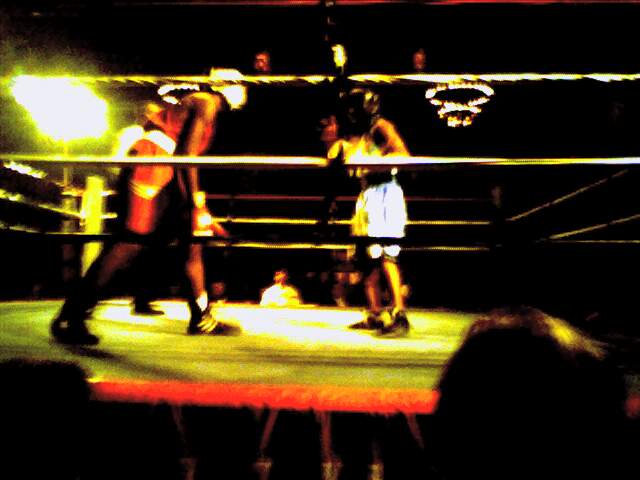
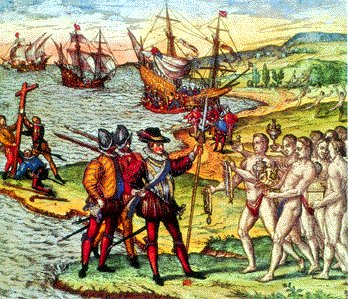 On October 12,
1492, at two in the morning, Rodrigo de Triana, a sailor on
Columbus’s Pinta, first sighted land in the new world, in the
Bahamas; Columbus called the island San Salvador, but which specific island
this was is lost to history. Later that
morning the indigenous Arawaks, meeting the expedition, offered gifts,
including tobacco.
Columbus wrote in his journal that day, “the natives brought fruit,
wooden spears, and certain dried leaves which gave off a distinct
fragrance.” The fruit was eaten, the pungent leaves thrown away.
Three days later Columbus mentioned the dried leaves again. “We found
a man in a canoe going from Santa Maria to Fernandia. He had with him
some dried leaves which are in high value among them, for a quantity of
it was brought to me at San Salvador." The first European smoker
was created less than one month after Columbus's landing.
On October 12,
1492, at two in the morning, Rodrigo de Triana, a sailor on
Columbus’s Pinta, first sighted land in the new world, in the
Bahamas; Columbus called the island San Salvador, but which specific island
this was is lost to history. Later that
morning the indigenous Arawaks, meeting the expedition, offered gifts,
including tobacco.
Columbus wrote in his journal that day, “the natives brought fruit,
wooden spears, and certain dried leaves which gave off a distinct
fragrance.” The fruit was eaten, the pungent leaves thrown away.
Three days later Columbus mentioned the dried leaves again. “We found
a man in a canoe going from Santa Maria to Fernandia. He had with him
some dried leaves which are in high value among them, for a quantity of
it was brought to me at San Salvador." The first European smoker
was created less than one month after Columbus's landing.
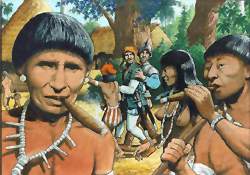 According to
According to
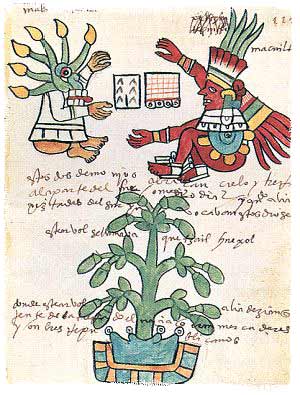 For our dessert
and mignardise courses, we note that cocoa beans were cultivated
by the Mayans and Aztecs and used in a variety of sauces (moles)
and beverages for centuries prior to the arrival of the Spanish. The
English word chocolate comes from the Nahuatl (Aztec) words
xocol (“bitter”) atl (“water”). Vanilla originated
in Mexico, and Mexico was the world’s chief producer until the mid 19th
century. Allspice was discovered by Columbus in the Caribbean.
He (typically) mistook it for black pepper, and it is still (also)
called pimienta in Spain.
For our dessert
and mignardise courses, we note that cocoa beans were cultivated
by the Mayans and Aztecs and used in a variety of sauces (moles)
and beverages for centuries prior to the arrival of the Spanish. The
English word chocolate comes from the Nahuatl (Aztec) words
xocol (“bitter”) atl (“water”). Vanilla originated
in Mexico, and Mexico was the world’s chief producer until the mid 19th
century. Allspice was discovered by Columbus in the Caribbean.
He (typically) mistook it for black pepper, and it is still (also)
called pimienta in Spain.  Club member Alexander SHERMAN invites the Cigar Society to take
part in his long-running symposium on
The Creative Force of the City, Especially This
One—And Grilled Cheese. The next two installments are on
the Friday,
November 10th and Friday, December 1st, 5:30-8:30pm, and will include civic
discussion, martinis, and grilled cheese sandwiches; a second shift will accommodate
those unable to attend early. To be held at the Equitable Trust Company,
Suite #402 in the Fisher Building (343 South Dearborn, between Jackson
and Van Buren).
Club member Alexander SHERMAN invites the Cigar Society to take
part in his long-running symposium on
The Creative Force of the City, Especially This
One—And Grilled Cheese. The next two installments are on
the Friday,
November 10th and Friday, December 1st, 5:30-8:30pm, and will include civic
discussion, martinis, and grilled cheese sandwiches; a second shift will accommodate
those unable to attend early. To be held at the Equitable Trust Company,
Suite #402 in the Fisher Building (343 South Dearborn, between Jackson
and Van Buren). 